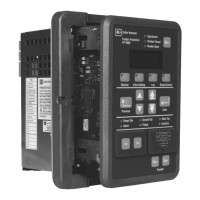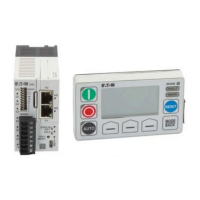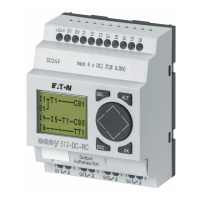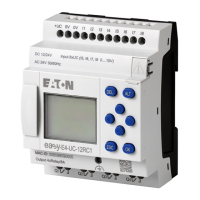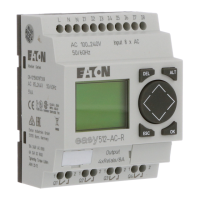I.L. 17562
Page 107
PR 0.3 Effective 8/99
URTD module without the PONI mounting bracket. Section 6, Figure 6.3 shows the depth of the
relay, with or without URTD module, and PONI attached to the back.
NOTE
Figure 6.3 applies for I-PONI, B-PONI, and D-PONI. The RS232-PONI is 0.1 inch deeper than
Figure 6.3 shows. The E-PONI is 0.5 inch deeper than Figure 6.3 shows, as well as being larger
in other dimensions.
10.4 Connecting the PONI to the relay - Each PONI type has a ribbon cable with a 9-pin D-sub
connector. This plugs into the mating 9-pin D connector above the right (rear view) terminal
block of the MP-3000. Secure with captive screws.
The PONI gets its operating power from the MP-3000 through the ribbon cable.
NOTE
The E-PONI draws more power from the relay than the other PONI types, and the E-PONI with
optical Ethernet communications demands the most power. This can reduce the ability of the
MP-3000 to ride through prolonged interruptions in the ac supply. See details in Section 9.3.
If voltage interruption ride-through is important and the E-PONI is used, power the E-PONI
through its external-power connector from a separate power supply. This unburdens the MP-
3000 power supply and restores full 25 to 50 cycle ride-through capability. See E-PONI
instructions.
NOTE
For the MP-3000 only, PONIs can be "hot-plugged" - connected or disconnected with the MP-
3000 powered. Hot-plugging may or may not be allowed with various combinations of other
communicating products and PONI types - check instructions of each device.
10.5 Connecting the PONI to the network or host - Figure 10.1 shows an outline of the I-
PONI. The INCOM network comprises a shielded twisted-pair conductor which is daisy-chained
from one communicating device to the next as shown. There is only one INCOM network
master, which is either a MINT (INCOM network to RS-232 port converter) or a CONI/CONI III
(ISA card for PC with INCOM port on the rear flange).
INCOM provides full galvanic isolation of every communicating device from the network, and
works reliably in noisy industrial environments. See IMPACC Systems Communications Manual,
I.L 17384. For best results, follow the network wiring rules in the PONI I.L. and in the IMPACC
wiring specification, T.D. 17513. Proper handling of shield grounds (don't ground them
everywhere) is important to good noise immunity.
For INCOM, every communicating device must be set to a unique address on the network, using
address switches on the I-PONI or B-PONI as shown in Figure 10.1. Also, all devices must be
communicating at the same baud rate, which will usually be 9600 unless some old devices are
on the network.
For the RS232-PONI, use a computer serial communications cable to connect to the serial port
of the PC running the host software. See PONI I.L. for pinout.
For DeviceNet and Ethernet connections, refer to the instructions for those PONIs.
PowerNet software is supplied with its own comprehensive instructions, which explain how to
access MP-3000 data and control capabilities at the host client computer.
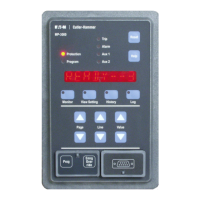
